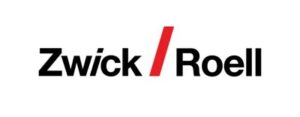Melt flow testing breakthrough: Automatic control of key test phases
Kennesaw, GA – The latest version of ASTM D1238 defines the use of force-controlled extrusion plastometers for the determination of melt mass-flow rate (MFR) and melt volume-flow rate (MVR). This means new control possibilities, especially for the preheating phase of the test process. The test sequence is largely automated, greatly relieving test personnel from having to fill the correct sample mass and enter correct parameters, leading to increased efficiency and reproducibility.
The determination of volume or mass flow rates on different polymers can be a complicated task. Not only is it important to know at what weight and temperature each polymer must be measured to meet ASTM D1238 compliance, one must also know the required polymer volume, and control the preheating phase sequence of the test so that the measurement of the melt flow rates starts in the specified window of 7 ± 0.5 minutes of the preheating phase and at a piston height of 46 ± 2 millimeters. Operators are also tasked with pre-compacting the polymer as it is loaded into the barrel adding variability in force and time of the compaction.
Once the preheat phase is started, corrections by means of purging, i.e., applying larger weight than the test weight, must be carefully defined and implemented, as only the test load may be applied in the last two minutes of the preheat phase. Once the start window of 7 minutes at 46 millimeters has been reached under test load, the ASTM-compliant measurement is clearly defined.
The ZwickRoell Aflow model extrusion plastometer is uniquely designed to address the challenges of this test. The machine functions like a capillary rheometer. It uses a drive system with a load cell (instead of weights) but features a significantly wider range of control options. It also enables pre-compacting and cleaning via pneumatic cylinder at the touch of a button.
The newest feature of the Aflow is automatic control of the preheat phase—the real breakthrough. The instrument detects the fill level in the barrel right at the start of the test and measures the approximate value of the melt volume-flow rate early in the preheating phase. The instrument continuously calculates the ideal amount of purge required to switch to test load and precisely reach the target window (position and time) for the start of the test phase. All without operator intervention. The Aflow also automatically decides whether the measurements must take place at a 1/4″ or 1″ piston travel distance. For lab managers this means they can use a single test specimen weight (e.g., 5g) for all MFR values above 1 g/10 min.
For operators this means they simply fill 5 g of material into the extrusion barrel, pre-compact it via push button, start the test, and know that the test is running according to standard with optimal test parameters.
ASTM D1238 counterparts ISO 1133-1 and ISO 1133-2 have permitted the use of force-controlled extrusion plastometers for many years. With these ISO standards already included in ZwickRoell’s Aflow test programs, many laboratories among molding material manufacturers and compounders worldwide have come to value this instrument for its robustness, ease of operation, and reliable test results.
ZwickRoell North America is a subsidiary of the ZwickRoell Group, headquartered in Ulm, Germany. ZwickRoell is a worldwide leading supplier of materials testing machines, automation solutions, and intelligent testing software for customers in over 20 industries. The family-owned and operated company is represented by production facilities and sales and service partners in 56 countries and by 1,800 employees with a passion for technical performance, innovation, quality and reliability in materials and component testing.

